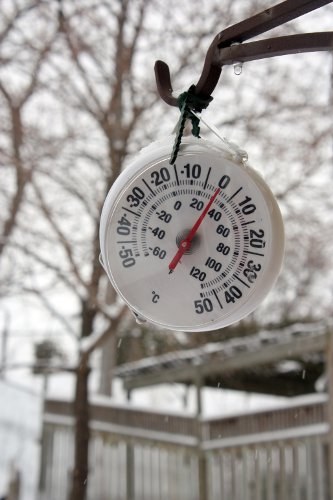You will need
- thermometer.
Instruction
1
The amplitude of the daily temperatures you can calculate yourself. Conduct the appropriate measurements. The weather stations usually measure the ambient air temperature 8 times a day, ie every three hours, starting at midnight.
2
Find the maximum and minimum values. Subtract the smaller from the larger. If you measure in the summer, then both values will be positive. For example, the highest temperature is +25°C and the lowest is +10°C. Subtracting from the first second, you get a 15°C. This is the amplitude of daily temperature in a given day.
3
To compute amplitudes in spring and winter, use the same methods you used in solving mathematical problems with positive and negative numbers. For example, if you have a daytime temperature of 10°C and at night drops to -10°C, actions will be similar to those described in the first case. From 10° -10 subtract, that is A=10-(-10)=10+10=20.
4
The amplitude of monthly or annual temperatures calculated in the same way. Among all values find the maximum or minimum, and then subtract from first second.
5
We can calculate the amplitude of daily average temperature. First, calculate average values, for example for each day. To find the average daily temperature, it is necessary to add up all the values and divide the resulting amount by the number of measurements. The more you look at the thermometer, the higher the accuracy of the result. Although usually to calculate the average daily temperature is enough 8 measurements and to determine the amplitude.
6
Write down all daily average temperature for the month. Find the largest value and the smallest. Subtract from first second. The annual amplitude is the same.
Useful advice
To determine the amplitude of temperature is desirable to use the same thermometer. It can be as ordinary street alcohol thermometer and a digital weather station. Such a device combines several devices. You can calculate the other amplitudes, such as humidity and pressure.
If you are not very confident are operating with positive and negative numbers, do yourself a scale, such as a numeric range. Mark on it the point 0. Divide the right and left parts into segments of equal length. In the right part of each mark put a positive number in the left - negative mirroring. Otkroite right number of degrees above zero, the left - below. Count how many of the segments located between these points.
If you are not very confident are operating with positive and negative numbers, do yourself a scale, such as a numeric range. Mark on it the point 0. Divide the right and left parts into segments of equal length. In the right part of each mark put a positive number in the left - negative mirroring. Otkroite right number of degrees above zero, the left - below. Count how many of the segments located between these points.

